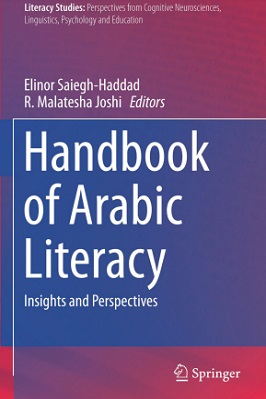
| Book Title | Handbook Of Arabic Literacy |
| Book Author | Elinor Saiegh-Haddad |
| Total Pages | 430 |
| Book Views | |
| Language | English |
| Book Download | PDF Direct Download Link |
| Get Hardcover | Click for Hard Similar Copy from Amazon |
Handbook of Arabic Literacy – Insights and Perspectives by Elinor Saiegh-Haddad R. Malatesha Joshi
HANDBOOK OF ARABIC LITERACY
The present volume offers no quick-fix remedies, but it does offer a first-generation infrastructure of scientific theory and research that can inform decision-making by policy-formulators, educators, and practitioners confronting the literacy challenge in Arabic on a daily basis.
Saiegh-Haddad and Joshi have rendered outstanding service to the field in this ground-breaking volume which brings together a panoply of leading scholars from the Middle East, North America, and Europe, representing a wealth of disciplinary perspectives.
The depth and breadth of the scholarship will no doubt earn this handbook benchmark status for future work in this field.
Arabic is the fourth most common language in the world, and the Arabic script is the second most widely used segmental (phonemic) script after Roman.
The scholarship embodied in this volume will not only inform practitioners and researchers of the Arabic language and literacy but any theory aspiring beyond language-specific status.
For too long, the language and literacy research agenda has been a captive of Anglo-American concerns, overwhelmingly dominated by English.
Today, the world is finally waking up to the fact that most of the world’s languages are not English-like.
This Anglo-centrism is ever more poignant in the literacy domain given that English orthography is an outlier even among European alphabets (Share VI Foreword 2008).
Most of the world’s literacy learners are learning to read in languages and writing systems that are neither alphabetic (i.e., full and equal status is given to consonant and vowel signs) nor European.
It, therefore, behooves researchers to keep informed of literacy studies across a range of languages and writing systems and avoid the scientific solipsism of the past in which literacy studies in languages other than English were regarded as mere exotic curios a.
This volume will become a landmark not merely because it is a world first, but because it offers all literacy scholars a wider-angle lens on their own work.
To read more about the Handbook Of Arabic Literacy book Click the download button below to get it for free
Report broken link
Support this Website
Click here to join our Telegram group for new Books